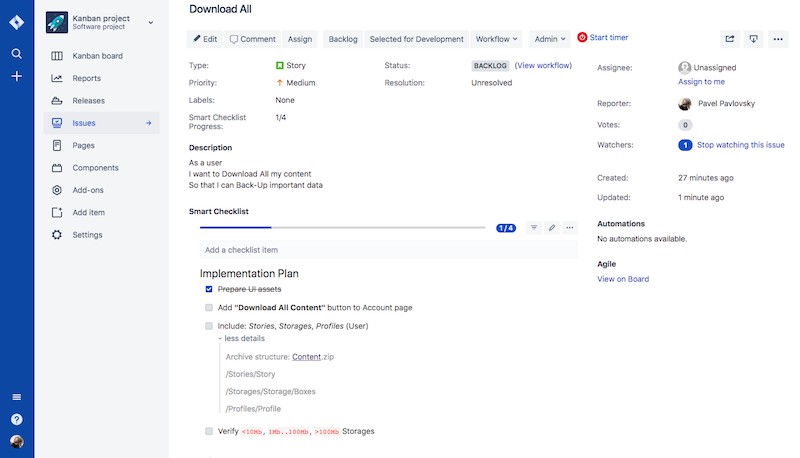This article was written with Olga Rusnak of Railsware.
——
In the late ‘90s and early 2000s, most technology companies applied the waterfall methodology, imposing strict documentation requirements and sequential development approaches. This often led to releasing insufficiently tested, or even technologically and contextually outdated products. Thus, in 2001, Agile appeared as an alternative to the existing way of building products.
As a flexible methodology, Agile leaves room for maneuvering. However, because of that, it can also be considered complex and unwieldy. That’s why strategic and straightforward checklists deployed at various points within your workflow can help move your development process forward in an organized way. Here are some simple tips for getting the most of your agile process using Jira.
Create the product backlog and user story implementation plan
Agile processes aim to connect the business and developer worlds to get better results. The methodology encourages everyone to contribute by providing inputs and insights, which helps the team shape the future product.
Later, a product owner reviews the incoming information and turns it into user stories (an explanation of a feature from an end-user viewpoint), which are put into a single product backlog.
Some teams group user stories into larger tasks, called epics. Knowing what epic has the highest priority, the product owner can ask developers to prepare a detailed plan per user story in this epic. The plan, represented as a ToDo list, provides an engineer with an explanation of what to do to execute the user story.

Use checklists in scrum and Kanban boards
As part of Agile, software development teams are recommended to display and monitor their activities on boards. Jira leverages scrum boards for the planning stage and kanban boards for the launched sprints.
By keeping both boards up-to-date and enforced with checklists, the agile team gets extra visibility into the product backlog, current tasks, job progress, blockers, team capacity, and other data.
Identify the definition of done (DoD) and acceptance criteria using checklists
When it comes to identifying the conditions for a product increment to be considered as ‘Done,’ the opinion of a product owner usually differs from those of a developer or a scrum master. So, to avoid misunderstandings and ensure only completed features are released, check feature readiness against the definition of done (DoD) and acceptance criteria checklists.
- The team compiles a DoD list at the beginning of the sprint and integrates it into the existing Jira workflow for everyone to easily access. Before moving an issue to ‘Done,’ teammates check the list to make sure it’s actually complete.
- Before a user story is delivered, a product owner must accept it. The acceptance criteria checklist is a list of business cases or conditions the product increment has to meet to be released.

Structure the working chaos with agile processes
Agile is an enormously popular methodology but is used differently everywhere because each team customizes it to fit its use case. Checklists allow teams to break up large tasks, monitor stages, create templates, and more. By introducing this simple tool in Jira, a company structures the working chaos and helps everyone see what needs to be done and when it is complete.
Try organizing your workflow with Smart Checklist for Jira from the Atlassian Marketplace.
Try Smart Checklist for free
